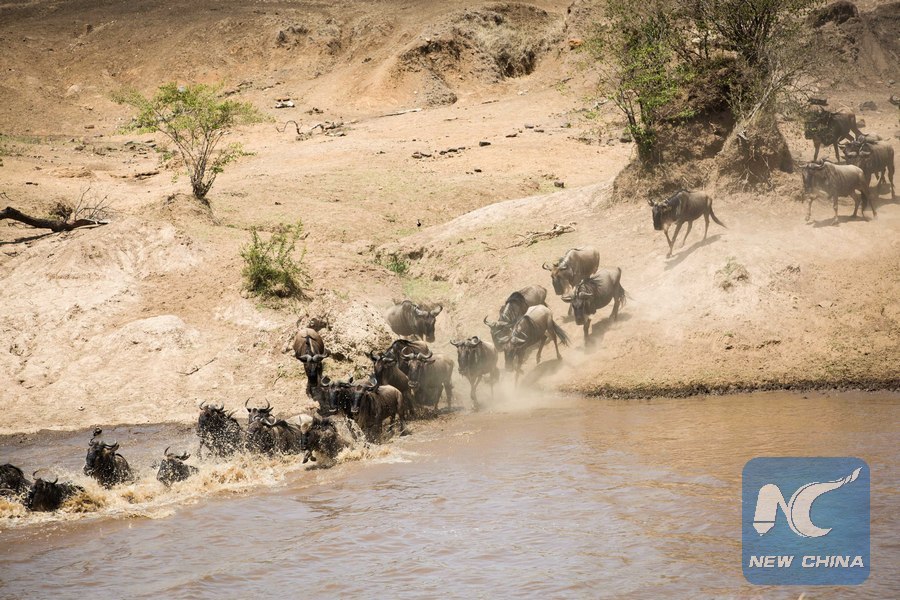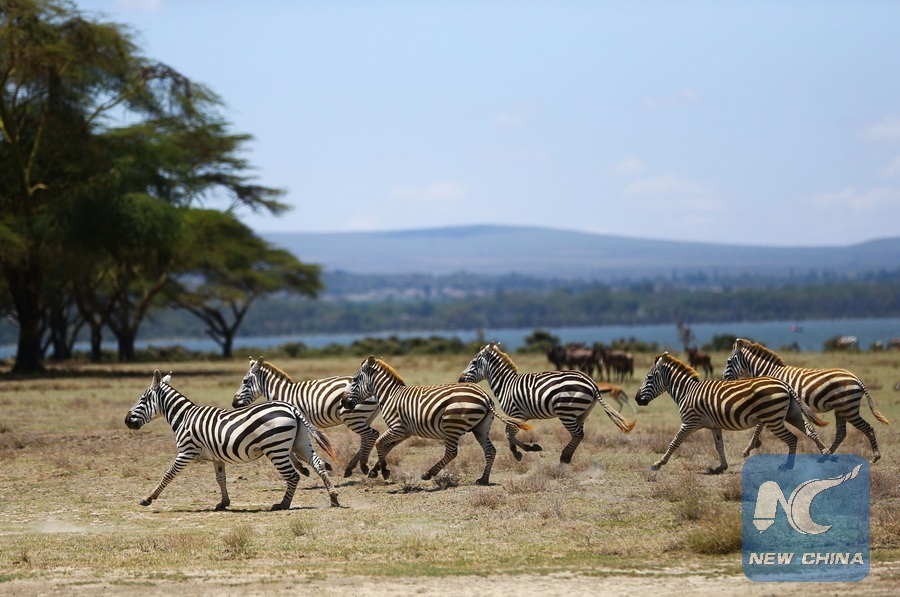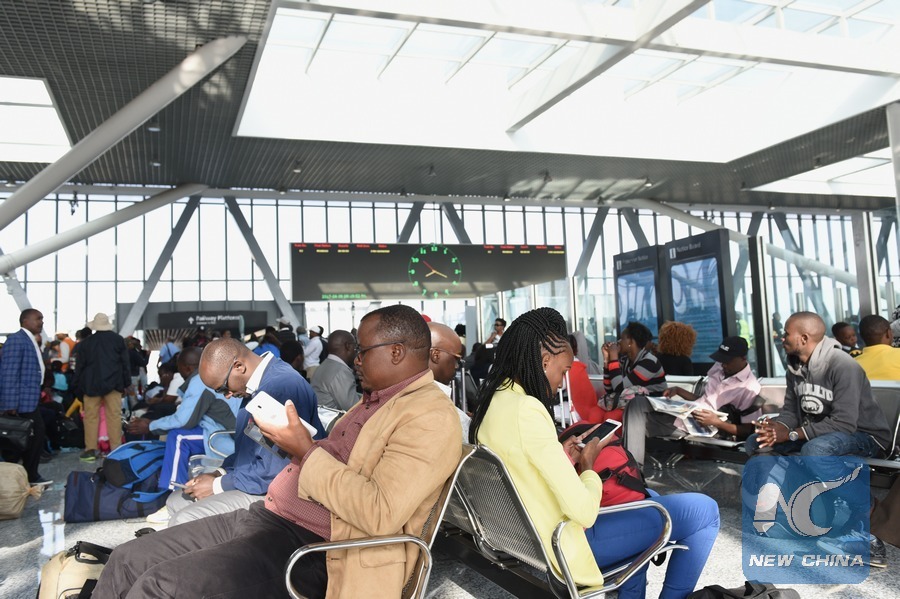
Wildebeests cross the Mara River at the Maasai Mara National Reserve, Kenya, Aug. 28, 2017. (Xinhua/Lyu Shuai)
NAIROBI, Feb. 9 (Xinhua) -- Kenya plans to double its income from tourism in the medium term when it starts implementing the new marketing plan, potentially returning tourism as a top foreign exchange earner, an official said late Thursday.
Najib Balala, Cabinet Secretary for Tourism and Wildlife, said the new plan, to be implemented starting March, will involve mobilizing more money for marketing of tourism products across the world as well as maintaining the growth of domestic tourism.
"Our new marketing plan will be like no other. It will embrace disruptions like information technology, the Uber and innovation to meet the needs of the millennials," Balala told Xinhua in an interview.
"Digital marketing is a priority for us. Our research shows that 72 percent of the visitors last year first went to check for their preferred destination on the internet," said Balala.

Zebras run at the Crescent Island in Lake Naivasha, Kenya, on March 19, 2017. Lake Naivasha is the second largest freshwater Lake in Kenya and a noted scenic spot for tourists. (Xinhua/Pan Siwei)
"Our selling points are the beaches and the wildlife. We want to enhance these products," said Balala.
He said Maasai Mara remains a premium magnet for Kenya safari tourism, saying the government is working with local officials to ensure no further development of structures takes place in the park, which is likely to affect the ecosystem of the wildlife.
"Recently, together with the County Government of Narok, we demolished some structures which had been built in the Mara. We shall continue to ensure that Mara remains the gem of our tourism," said Balala.
He also said investments in tourism projects like hotels is part of the masterplan. He said the government is encouraged by the growth of globally graded hotels, some of which have set up out of Nairobi.
Also highlighted is the tourism infrastructure, including the Standard Gauge Railway.
Passengers wait for boarding at Nairobi Terminus of the Mombasa-Nairobi Standard Gauge Railways (SGR) in Kenya, on June 9, 2017. Nearly 12,000 passengers had traveled on the newly launched Standard Gauge Railways (SGR) linking Kenya's port city Mombasa with its capital Nairobi in the week ending Wednesday, operator said on Thursday. The railway, a 480 km line which kicked off passenger service on June 1, is currently operating with scheduled passenger trains from Nairobi and Mombasa running on a daily basis. (Xinhua/Li Baishun)
Balala said the railway has been a catalyst for grown of domestic tourism as the locals are now able to access Mombasa beaches at a cheaper cost and in an efficient, comfortable manner.
Another important infrastructure project in planning is the Likoni Cable Cars project, which will enable people to cross the Likoni channels that connect South Coast with North Coast in the tourist city of Mombasa, according to Kenya Ferry Services (KFS).
Bakari Gowa, the Managing Director of KFS, said the construction will start soon and should be completed by 2020.

